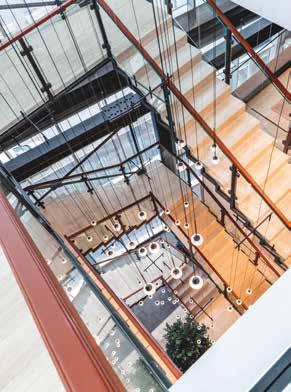






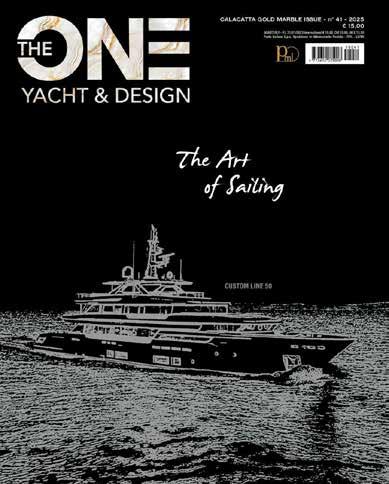











by Désirée Sormani
Azimut|Benetti Group and Ogyre sign a partnership aimed at collecting and recovering plastic from the seas in three continents. And develop a waste collection hub in Tuscany
According to the WWF report “Out of the Plastic Trap: Saving the Mediterranean from Plastic Pollution” (2018), with 1.25 million microplastics per square kilometre the Mediterranean hosts a density of microplastics four times higher than that of the famous Pacific plastic island. With reference to this argument and in line with its commitment to sustainability, the Azimut|Benetti Group, has recently signed an agreement to support Ogyre platform in their campaigns to collect plastic from the sea. The target is 18,000 pounds of plastic in 2025 through the work of local fishing communities; at the same time, the two partners will jointly launch a feasibility study for the opening of a new hub in Tuscany where Ogyre will be able to operate in the collection of marine waste, involving institutions and the community.
For over twenty years, Azimut|Benetti Group has led the yacht industry in the development and implementation of solutions to reduce the CO2 emissions of yachts, achieving the best
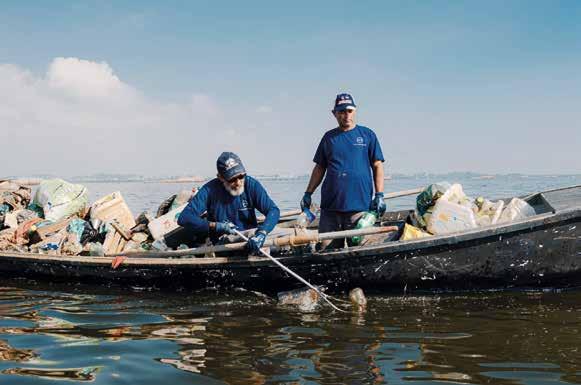
Ogyre collaborates with local fishing communities, providing them with equipment, logistical support, training and financial compensation to carry out the Fishing for Litter activity
results in the field. Now, a growing awareness of plastic waste in the seas has encouraged the company to sign this partnership in order to make a practical contribution to the drive to clean and protect ocean ecosystems. The waste collection will be concentrated in three countries: Italy, Brazil and Indonesia, symbols of the profound relationship between man and the natural ecosystem and which, for various reasons, are seriously impacted by pollution. In particular, Italy overlooks the Mediterranean, a
semi-closed sea that is thus more vulnerable to plastic accumulation. Brazil and Indonesia, on the other hand, face a critical situation linked to the presence of highly contaminated rivers, which transport large quantities of waste to the sea, seriously compromising the ecosystem. Through its business Ogyre collaborates with local fishing communities, providing them with equipment, logistical support, training and financial compensation to enable them to carry out Fishing for Litter activity.
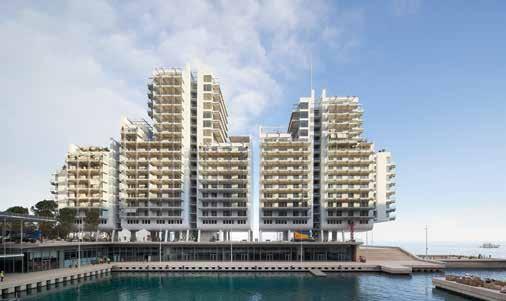
AnewMareterra eco-district was inaugurated by H.S.H. Prince Albert II of Monaco. More than 300 companies and 4,000 people were mobilised for the sustainable creation of a six-hectare addition to the Principality of Monaco.
It is the result of Valode & Pistre Architects and Renzo Piano Building Workshop, with landscape design by Michel Desvigne. Entirely pedestrianised, almost half of the extension is made up of airy public spaces that are open to all with a one-hectare park,
MarinaIbiza has promoted the Marine Forum. This annual event, a key encounter for experts and lovers of the sea, addressed crucial issues such as the conservation of Posidonia, environmental education, and ocean conservation.
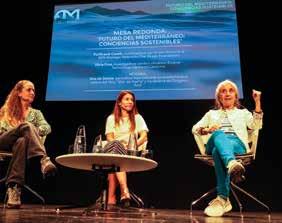
“In this sixth edition, we talked about the effective protection of the ocean, and we asked all institutions, companies, public authorities and islanders to join in with this initiative. What’s more, we showcased some projects to regenerate our waters and our coastline”, said
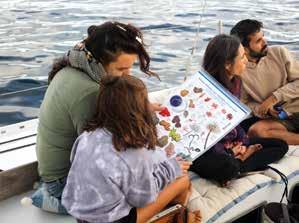
a promenade punctuated with places for rest and meditation, a 16-berth marina, and shops, creating a new location for Monegasques and visitors alike. As a pioneering project that creates a blueprint for eco-design and construction on water, Bouygues Travaux has delivered a new global standard in civil engineering. The 18 submerged caissons which delimit the district were designed to encourage colonisation by marine fauna and flora. Under the structure, the installation of corridors and habitats foster and cultivate marine life, with special grooving on the caissons that facilitates the attachment of algae, and the establishment of artificial seagrass beds protecting local species. The Monegasque Government used Mareterra’s feedback to establish an eco-design guide applicable to its future maritime developments around the world, creating a world first.
Antonio Martínez Beneyto, Coordinator of the Marine Forum. To mark the twenty-fifth anniversary of UNESCO’s listing of Posidonia as a World Heritage Site, the forum paid particular attention to this marine plant, vital to the health of the Mediterranean. Renowned experts shared their knowledge and experience, providing an insight into the challenges and opportunities concerning the sea. “The companies and entities in the Forum’s promotion team have mapped out a course of action that involves bringing expert voices to this event to analyse the situation of our sea and propose ideas that would benefit it. Our audience is global and inclusive because we understand that the entire Balearic society should know about what’s happening to our sea, which is a source of life and progress for these islands”, said Martínez Beneyto.
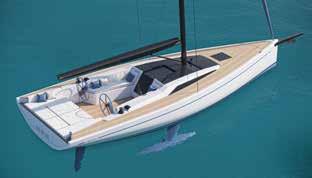
Grand Soleil Yachts, a name synonymous with quality and innovation in sailing for over 50 years, announce the Grand Soleil Blue at Boot Düsseldorf. This new project embodies the commitment of Grand Soleil Yachts
and Cantiere del Pardo to sustainability and respect for the marine environment, marking an important development in eco-friendly yacht building.
The GS Blue is the product of a dynamic collaboration between the yard and nautical experts Matteo Polli (Naval Architecture) and Nauta Design (Exterior Design, Interior Design, and G.A.), alongside leaders in sustainable materials like NL Comp.
The 10-metre Grand Soleil Blue accommodates up to four people overnight, providing a zero-impact sailing experience. At the end of its life cycle the boat is
entirely recyclable. In fact, the choice of construction material - a thermoplastic resin - combined with a smart design approach allows easy separation of boat accessories and components. The GS Blue will be equipped with an 8 kW, 48V lithium battery bank which can be recharged in 7.2 hours, with a 6 kW electric motor and solar panels. The latter enable renewable energy autonomy by recharging the battery bank powering the electric motor and supporting onboard services. In line with the project’s emphasis on sustainability, the sails are made from thermoplastic materials, leading to further reductions in environmental impact.
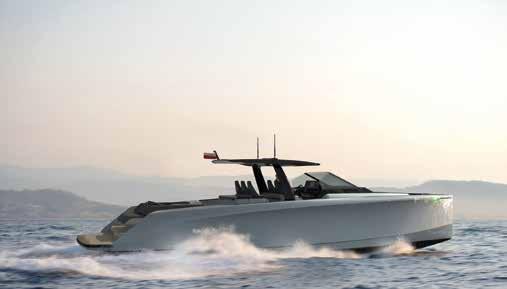
The Sialia 45 electric cruiser is winner of the 2024 Gustave Trouvé Awards for excellence in electric boats and boating, in the ‘Electric Boats Over 8m / 26ft In Production’ category. The Gustave Trouvé Awards for Excellence in Electric
Boats and Boating were created to recognize the inventors, designers, manufacturers, entrepreneurs and visionaries who are making advances every day to develop clean, quiet, zero emission technologies and designs to reduce reliance on fossil
fuel for marine propulsion. The prize is in honour of Gustave Trouvé, a prolific French inventor with over 75 patents.
The Sialia 45 emerged as the top choice in its category, receiving the highest number of votes from the judges. It is a full-electric cruiser with 43 knots max speed and the largest range in its class. The entire design and production methodology has been developed with lifecycle in mind. At a cruising speed of 25 knots, the standard 500kWh battery pack offers a range of 55 nautical miles, or 77 miles with the optional 200kWh endurance battery pack, which becomes 164 nautical miles with the use of the Range Extender (Rex). This year, more than 150 boats were entered into the Gustave Trouvé Awards, with over 6,000 people from around the world casting their votes. The International Panel, comprising 32 electric boat experts, contributed votes weighted at a ratio of 3:1 in the final tally.
The new executive office and hospitality spaces in the Superyacht Yard of the Ferretti Yard’s multi-brand pole in Ancona cover a multi-floor area of around 4,200 square metres. The new premises embody a corporate identity that combines aesthetics, functionality and sustainability. This is where all the superand megayachts from 30 to 90 metres in length are built by the group’s brands (CRN, Custom Line, Riva Superyacht Division and Pershing). The building is designed to make the yard immediately recognisable. Its imposing form welcomes clients, who immediately feel immersed in the excellence of the group’s brands.
The cutting-edge architecture of the building, part of the yard’s redevelopment project, expresses the group’s links with the city – an in-depth study of local colours and the character of the region was carried out as part of its development. The interior design emphasises total personalisation of the spaces – metal, glass, leather, wood and select marbles define surface and furnishing details. Seven hundred square metres of Travertino marble from the Tivoli quarries were used for the floors and stairs, while fifty square metres of textured Crema d’Orcia was used for the wall panelling. Intense care was dedicated to comfort and sustainability in the
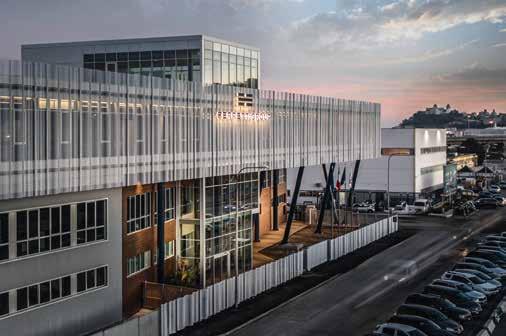
The Ferretti Group Superyacht Yard uses renewable energy generated by a series of solar panels and the yard’s tri-generation system. A solar plant has also been installed for producing electricity

workplace – this involved the installation of latest-generation systems for managing climate control, heating and ventilation, as well as cutting-edge workstations and video-conferencing rooms. Light and air create greater sensory quality and natural lighting, also providing wide vistas of the surrounding landscape, enhancing the psychological well-being of those using the building. The lighting throughout the structure is managed by an astronomical timing system - all the lights switch on and off together, thanks to technology that tracks dawn and dusk times for the geographical coordinates, while part of the nocturnal lighting has been specially developed. Some time ago CRN launched an initiative aimed at minimising the environmental impact of its production operations and its yachts. Sustainability starts with the yachts’ distinctive quality and excellence – the group’s research and development concentrates on using highperformance, sustainable materials and reducing energy consumption.
